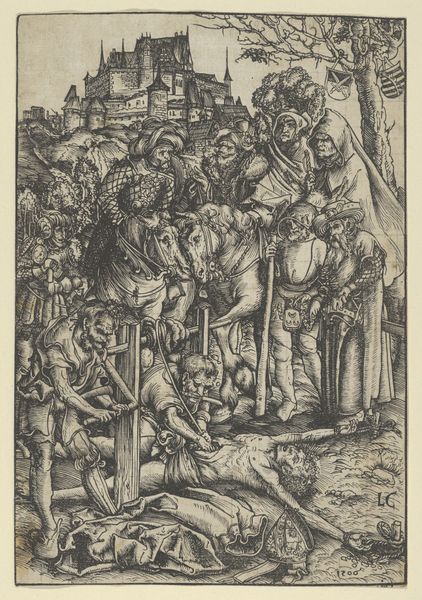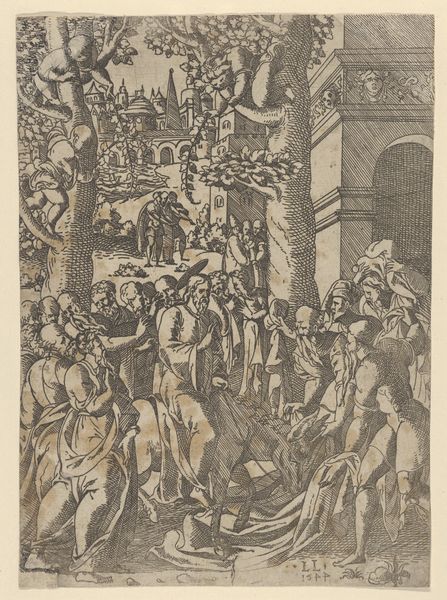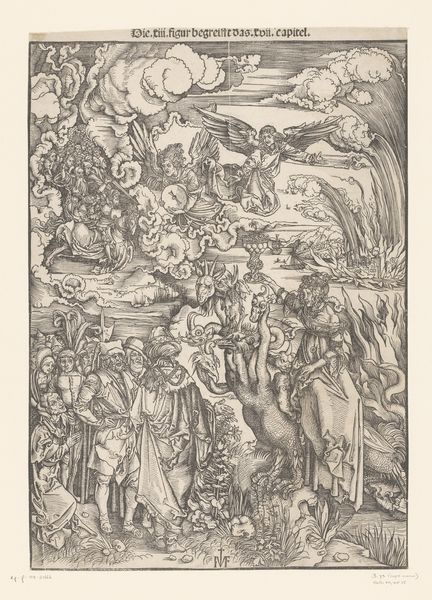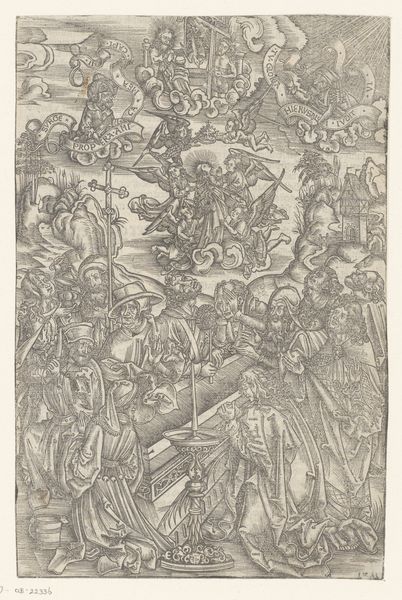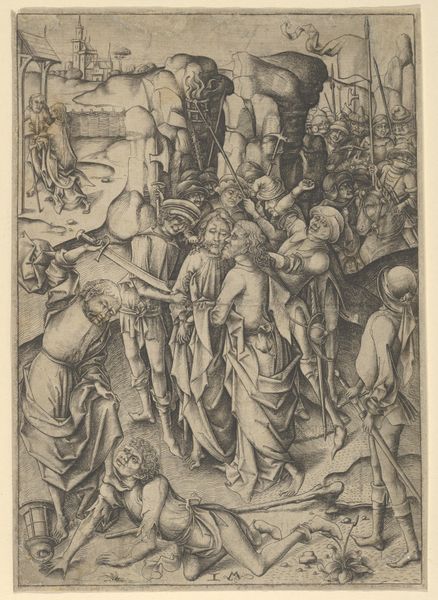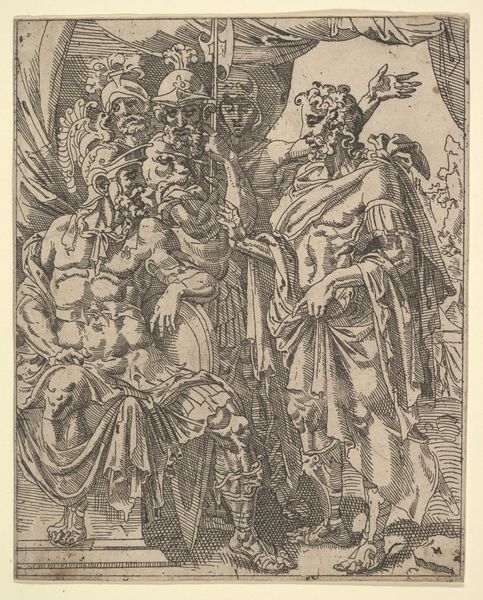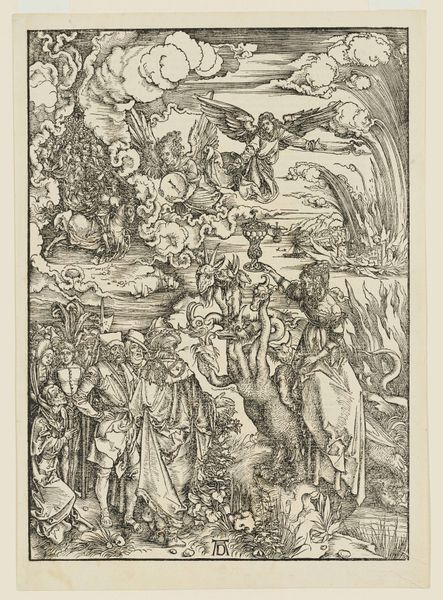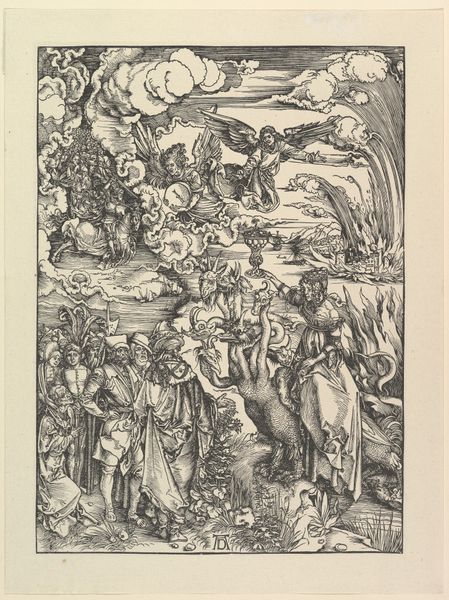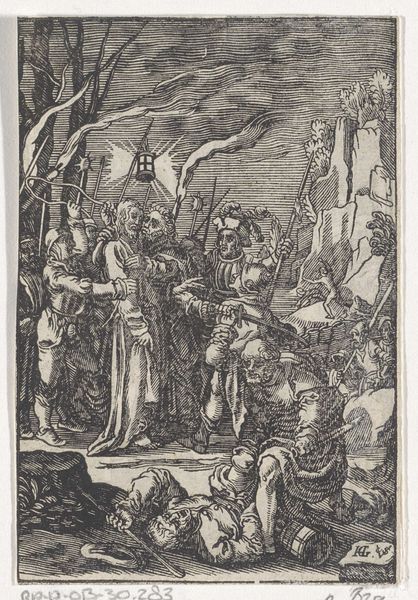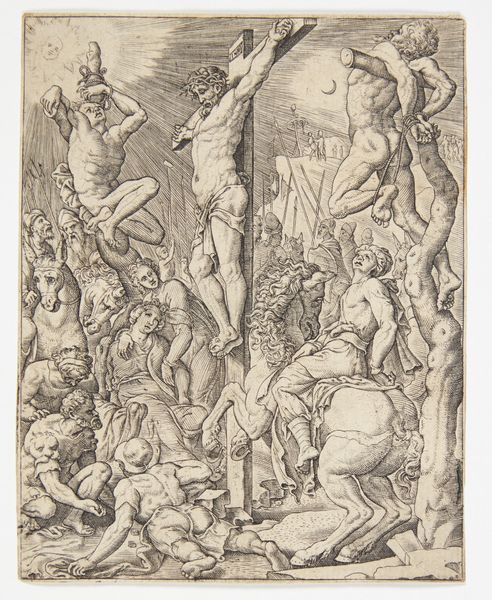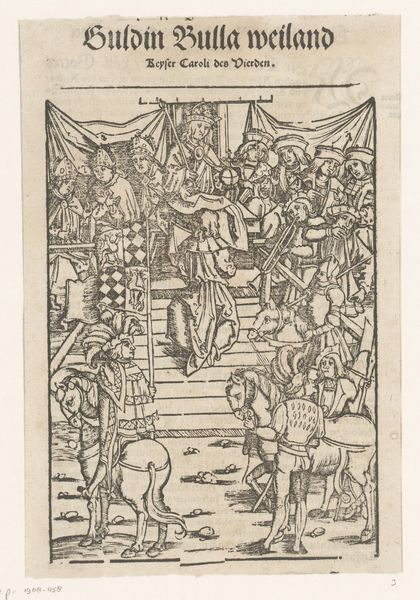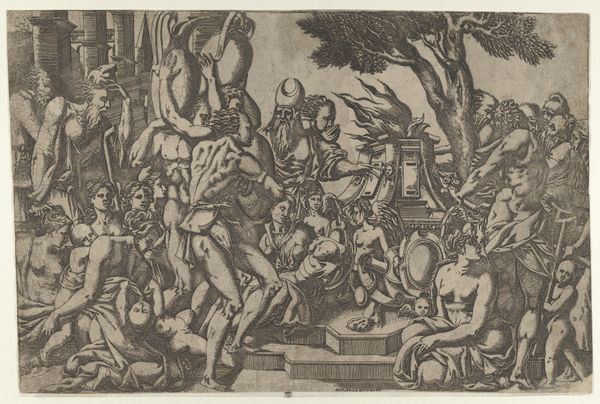
print, engraving
# print
#
figuration
#
11_renaissance
#
history-painting
#
italian-renaissance
#
engraving
Dimensions: Sheet: 10 in. × 7 3/8 in. (25.4 × 18.7 cm)
Copyright: Public Domain
Editor: This engraving, "The Betrayal of Christ," by Léonard Limosin, created in the 1540s, depicts a chaotic scene. I’m immediately struck by the energy and almost violent feel of the composition. How do you approach an image like this? Curator: Considering Limosin’s context, we have to examine the very process of its production. This isn't painting on a grand scale for a wealthy patron. This is an engraving, a print, allowing for wider distribution, which implicates the accessibility of religious narratives to a broader audience, including, potentially, emerging merchant classes with increased purchasing power. Look closely: what does the density of line, the obvious labor involved, suggest about its intended reception? Editor: It definitely feels different knowing it's an engraving, a print. It does feel like this image would be viewed differently than a painted fresco. Is it fair to assume this artwork's reach to lower social groups? Curator: The print medium shifts the narrative from solely the realm of high art for elites to something potentially accessible to a more diverse, less traditionally “cultured” consumer base. Its value lies not only in its visual representation, but in how its means of production democratizes, or attempts to, the consumption of religious stories. Think about where these prints were sold, who could afford them, and how that shaped their interpretation of the story. Editor: I never considered the role of accessibility impacting interpretation. I was just reading the image's overt expression of chaos! Curator: The emotional content works in tandem with that potential broadening audience, perhaps intended to evoke feeling to increase sales. Are the themes here deliberately sensationalized? The material and mode of its production directly informs its potential reception. It makes me think about our modern reproducibility of digital art today! Editor: So, considering the piece’s medium of production can provide interesting insights for us in its reading, who benefits from an image like this being mass produced at the time. Thanks, that has completely changed how I see this artwork!
Comments
No comments
Be the first to comment and join the conversation on the ultimate creative platform.
